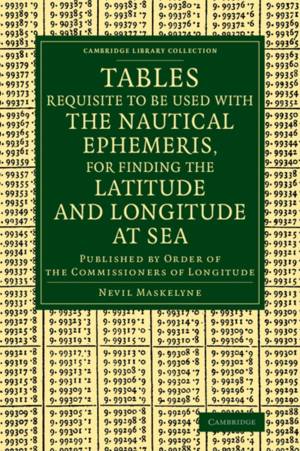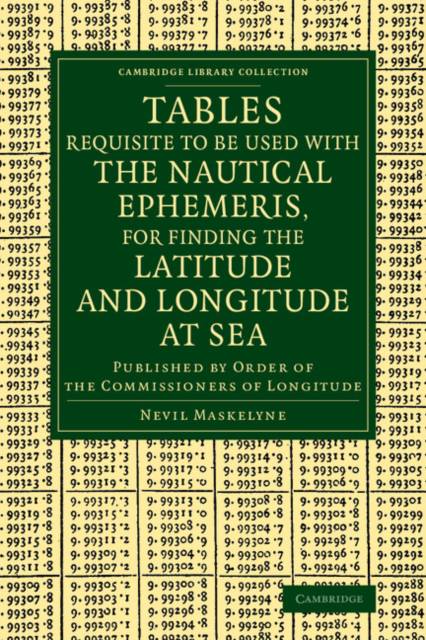
Door een staking bij bpost kan je online bestelling op dit moment iets langer onderweg zijn dan voorzien. Dringend iets nodig? Onze winkels ontvangen jou met open armen!
- Afhalen na 1 uur in een winkel met voorraad
- Gratis thuislevering in België vanaf € 30
- Ruim aanbod met 7 miljoen producten
Door een staking bij bpost kan je online bestelling op dit moment iets langer onderweg zijn dan voorzien. Dringend iets nodig? Onze winkels ontvangen jou met open armen!
- Afhalen na 1 uur in een winkel met voorraad
- Gratis thuislevering in België vanaf € 30
- Ruim aanbod met 7 miljoen producten
Zoeken
Tables Requisite to Be Used with the Nautical Ephemeris, for Finding the Latitude and Longitude at Sea
Published by Order of the Commissioners of Lon
Nevil Maskelyne
€ 70,95
+ 141 punten
Omschrijving
Successful long-distance navigation depends on knowing latitude and longitude, and the determination of longitude depends on knowing the exact time at some fixed point on the earth's surface. Since Newton it had been hoped that a method based on accurate prediction of the moon's orbit would give such a time. Building on the work of Euler, Thomas Mayer and others, the astronomer and mathematician Nevil Maskelyne (1732-1811) was able to devise such a method and yearly publication of the Nautical Almanac and Astronomical Ephemeris placed it in the hands of every ship's captain. First published in 1767 and reissued here in the revised third edition of 1802, the present work provided the necessary tables and instructions. The development of rugged and accurate chronometers eventually displaced Maskelyne's method, but navigators continued to make use of it for many decades. This edition of the tables notably formed part of the library of the Beagle on Darwin's famous voyage.
Specificaties
Betrokkenen
- Auteur(s):
- Uitgeverij:
Inhoud
- Aantal bladzijden:
- 280
- Taal:
- Engels
- Reeks:
Eigenschappen
- Productcode (EAN):
- 9781108068925
- Verschijningsdatum:
- 20/03/2014
- Uitvoering:
- Paperback
- Formaat:
- Trade paperback (VS)
- Afmetingen:
- 156 mm x 234 mm
- Gewicht:
- 394 g

Alleen bij Standaard Boekhandel
+ 141 punten op je klantenkaart van Standaard Boekhandel
Beoordelingen
We publiceren alleen reviews die voldoen aan de voorwaarden voor reviews. Bekijk onze voorwaarden voor reviews.











